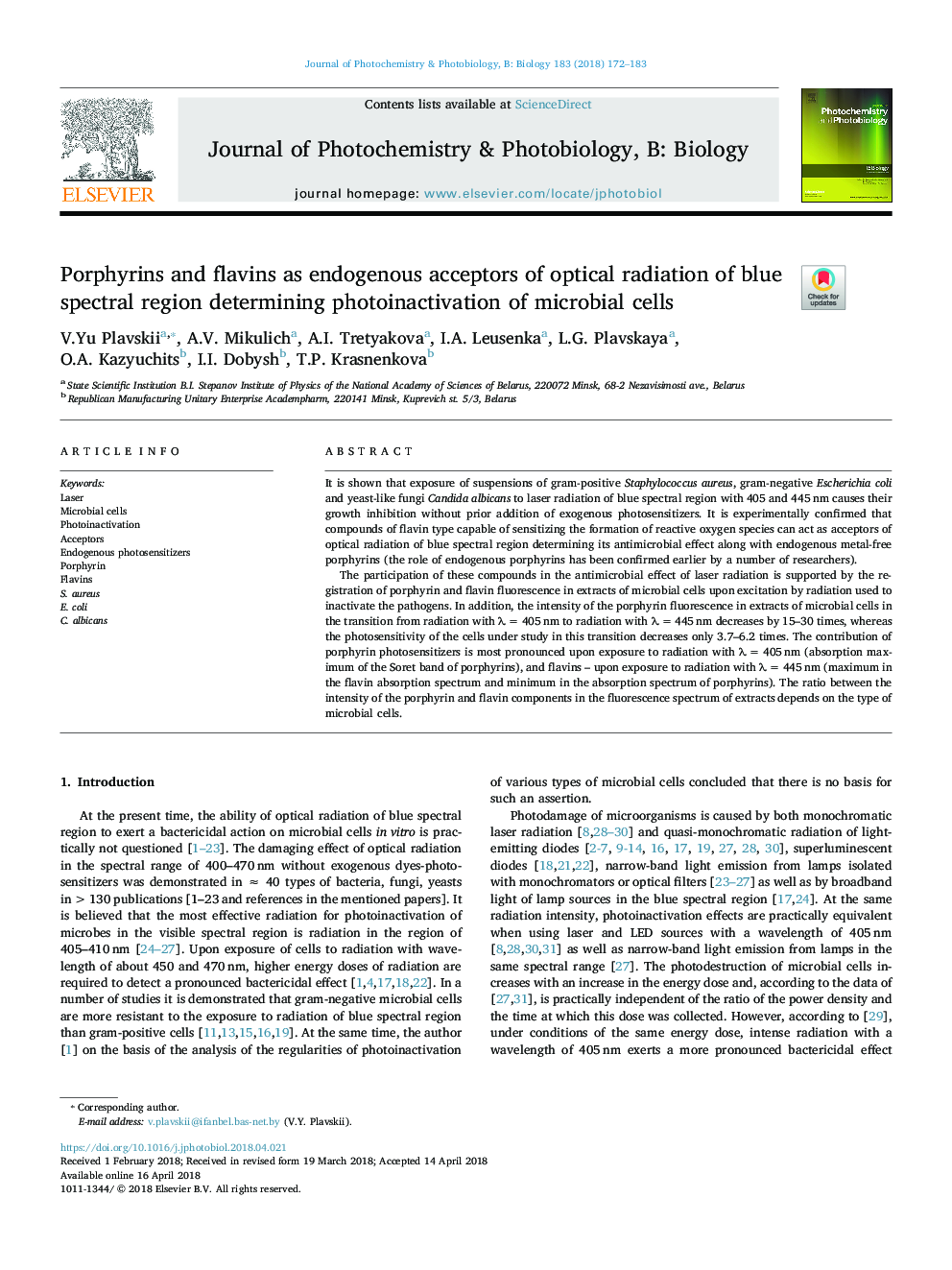| Article ID | Journal | Published Year | Pages | File Type |
|---|---|---|---|---|
| 6493272 | Journal of Photochemistry and Photobiology B: Biology | 2018 | 12 Pages |
Abstract
The participation of these compounds in the antimicrobial effect of laser radiation is supported by the registration of porphyrin and flavin fluorescence in extracts of microbial cells upon excitation by radiation used to inactivate the pathogens. In addition, the intensity of the porphyrin fluorescence in extracts of microbial cells in the transition from radiation with λâ¯=â¯405â¯nm to radiation with λâ¯=â¯445â¯nm decreases by 15-30 times, whereas the photosensitivity of the cells under study in this transition decreases only 3.7-6.2 times. The contribution of porphyrin photosensitizers is most pronounced upon exposure to radiation with λâ¯=â¯405â¯nm (absorption maximum of the Soret band of porphyrins), and flavins - upon exposure to radiation with λâ¯=â¯445â¯nm (maximum in the flavin absorption spectrum and minimum in the absorption spectrum of porphyrins). The ratio between the intensity of the porphyrin and flavin components in the fluorescence spectrum of extracts depends on the type of microbial cells.
Related Topics
Physical Sciences and Engineering
Chemical Engineering
Bioengineering
Authors
V.Yu Plavskii, A.V. Mikulich, A.I. Tretyakova, I.A. Leusenka, L.G. Plavskaya, O.A. Kazyuchits, I.I. Dobysh, T.P. Krasnenkova,
